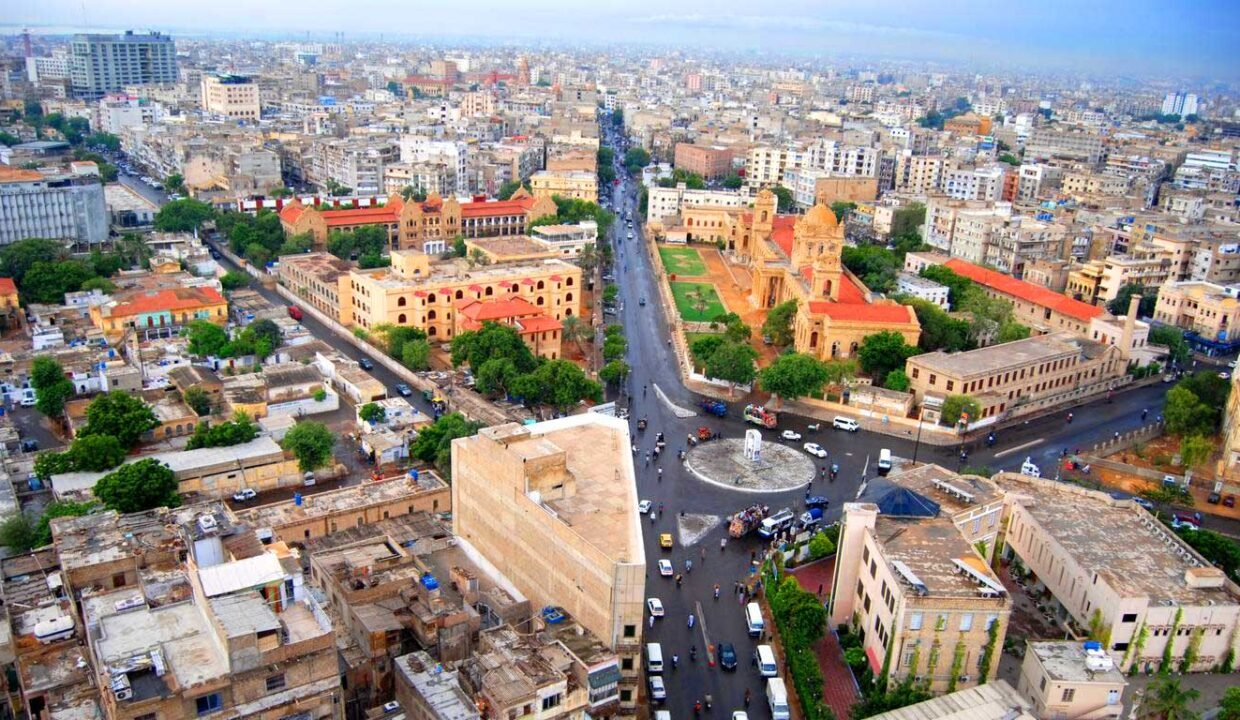Karachi’s Real Estate challenges: Navigating Affordability, Sustainability, and Social Equity
Karachi, a bustling metropolis, grapples with a complex real estate market that has far-reaching impacts on its social, political, economic, and environmental fabric. The sector’s affordability crisis, fueled by stagnant wages and skyrocketing housing prices, has created a deep chasm between the haves and have-nots. This exacerbates social exclusion, relegating low-income residents to cramped apartments or informal settlements, exposing them to precarious living conditions.
Meanwhile, Karachi’s affluent seek refuge in high-security gated communities, creating a physical and social divide that isolates them from the city’s rich culture. This segregated landscape fosters social tensions and hinders the development of a consensual ownership of the city.
The allure of profit in Karachi’s real estate market casts a long shadow, with land grabbing by powerful entities and political groups, often fueled by weak regulations and corruption, displacing low-income residents from their homes. This displacement, largely undocumented, breeds resentment towards authorities and needs to be studied on scholarly grounds.
Unplanned and rapid development, driven by short-term gains, puts a strain on Karachi’s infrastructure, overburdening sewage systems, inadequate water supply, and a lack of green spaces. These challenges impact the quality of life for all residents, particularly low-income groups, who face the brunt of environmental degradation.
However, if decision-makers and planners prioritize pro-poor development, supporting densification with accompanying facilities and infrastructure, the real estate sector can fuel Karachi’s economic engine while promoting social equity. This approach can attract investments, generate employment in construction and allied industries, and boost the local economy.
Self-propelled real estate development often leads to urban sprawl, encroaching on vital ecosystems and green spaces, disrupting natural drainage patterns, and worsening flooding during monsoons. The ‘heat island effect’ intensifies, contributing to rising temperatures and aggravating hardships for low-income groups.
Karachi’s transport infrastructure development, while aiming to improve connectivity, often disproportionately benefits the elite, exacerbating social inequalities. The sharp price upsurge in real estate along the Green Line corridor is a testament to this phenomenon, forcing out existing residents and attracting wealthier individuals and commercial sectors, ultimately leading to gentrification and displacement of low-income communities.
A significant portion of Karachi’s real estate market operates informally, outside the purview of official regulations. This informal sector, often referred to as the ‘land mafia,’ is allegedly involved in unauthorized subdivision of land, frequently government property, with suspected involvement of insiders. Influential figures within low-income groups reportedly negotiate with law enforcers for personal profit and gains.
Government intervention through affordable housing schemes, hassle-free loans for housing, and rent control regulations can help bridge the affordability gap. Engaging with communities in development plans, fostering a sense of ownership, and ensuring development projects cater to residents’ needs are central to inclusive growth.
By acknowledging the multi-dimensional impact of Karachi’s real estate market and embracing sustainable practices, the city can chart a course towards a more equitable and environment-friendly future.

